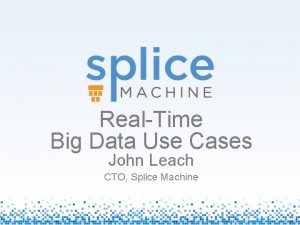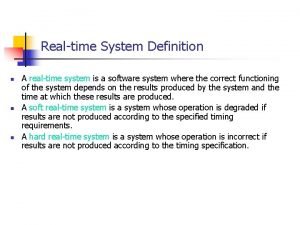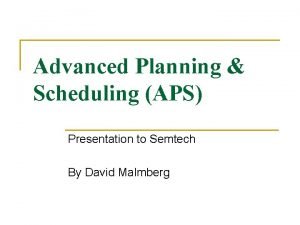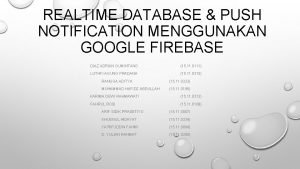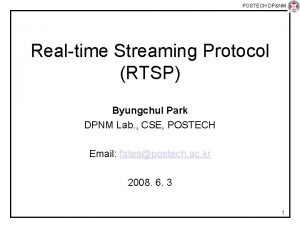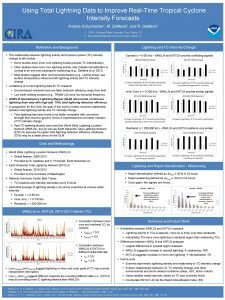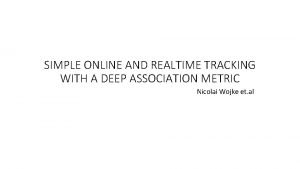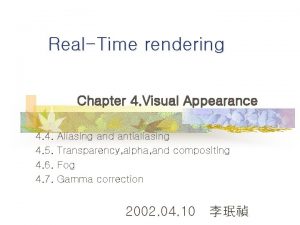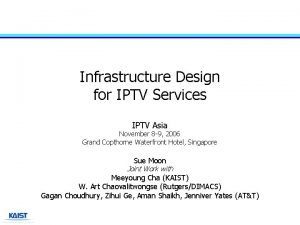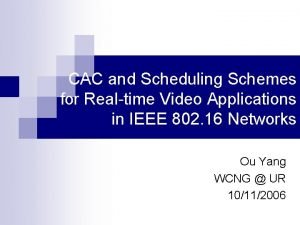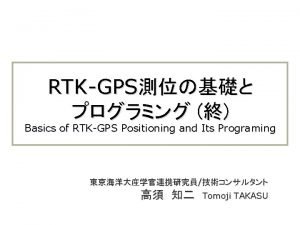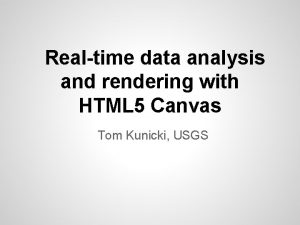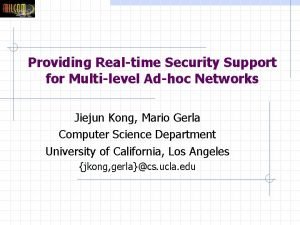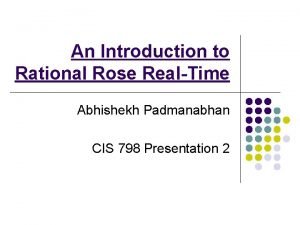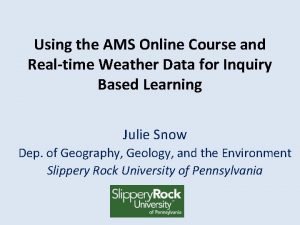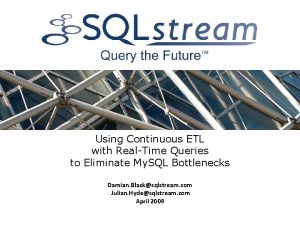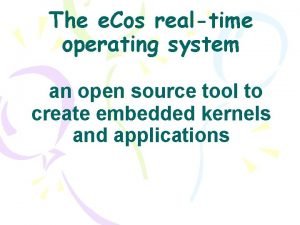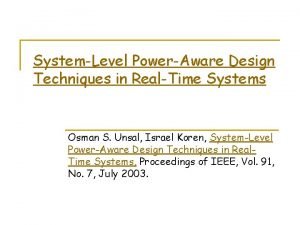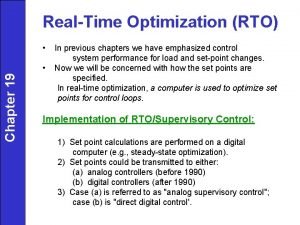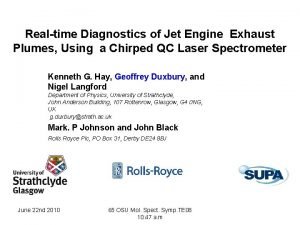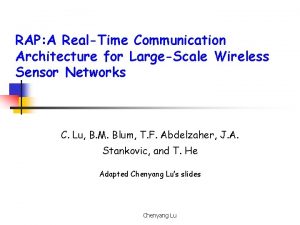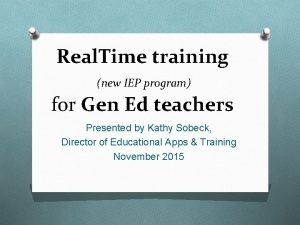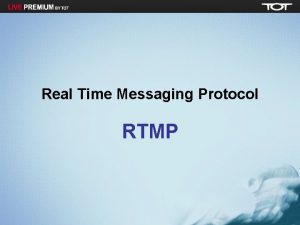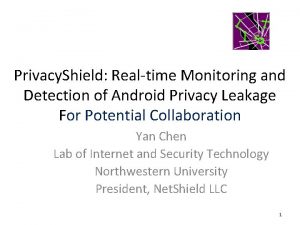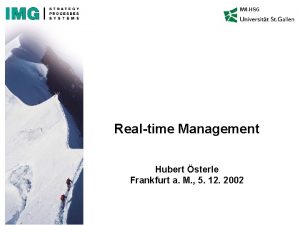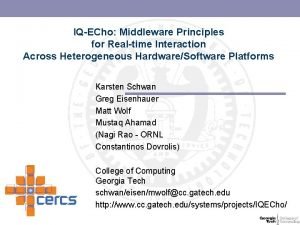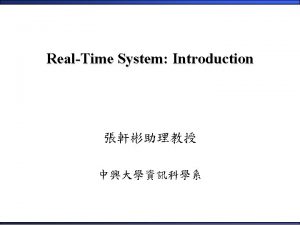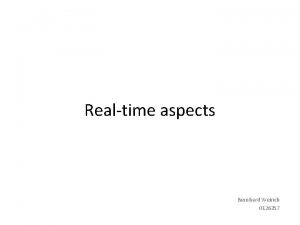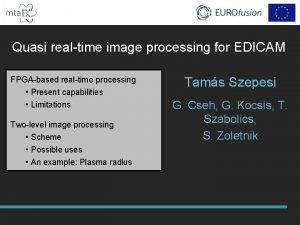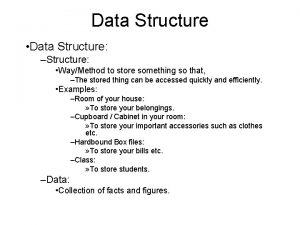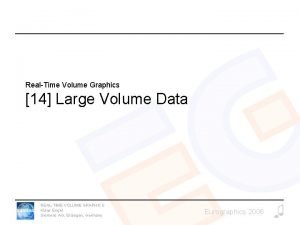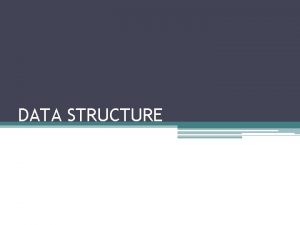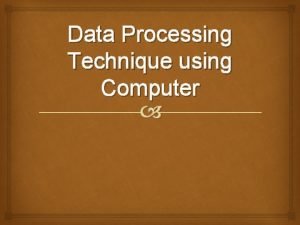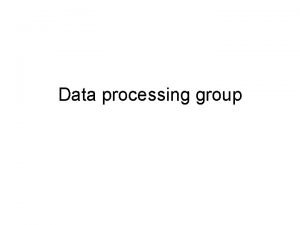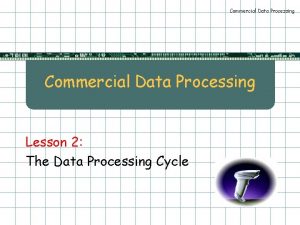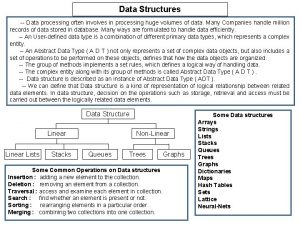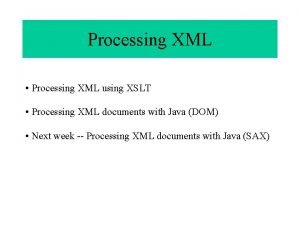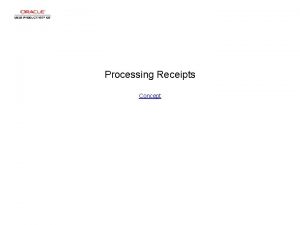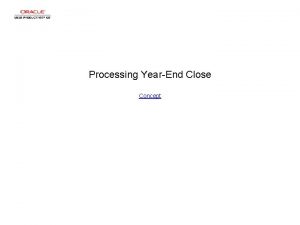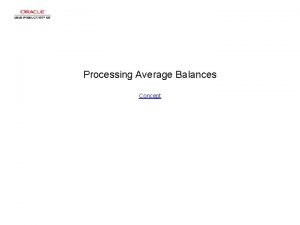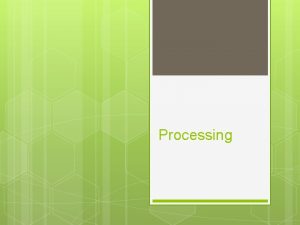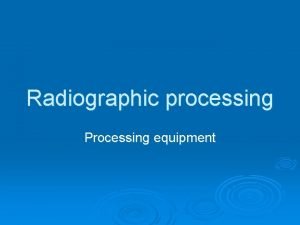Data Structure for RealTime Processing in 3 D


![Example • Terrain classification – Through local processing [Vandapel-ICRA 04] vegetation linear surface 06/10/05 Example • Terrain classification – Through local processing [Vandapel-ICRA 04] vegetation linear surface 06/10/05](https://slidetodoc.com/presentation_image/3adcac709247de5d8fe773d741a6b71b/image-3.jpg)



![Challenges • Nature of data – Ladar on a moving platform [Lacaze-AUVSI 02] • Challenges • Nature of data – Ladar on a moving platform [Lacaze-AUVSI 02] •](https://slidetodoc.com/presentation_image/3adcac709247de5d8fe773d741a6b71b/image-7.jpg)



























- Slides: 34

Data Structure for Real-Time Processing in 3 -D Jean-François Lalonde, Nicolas Vandapel and Martial Hebert Carnegie Mellon University

Problem Dynamic processing of large 3 -D point cloud data from ladar 06/10/05 Robotics: Science and Systems
![Example Terrain classification Through local processing VandapelICRA 04 vegetation linear surface 061005 Example • Terrain classification – Through local processing [Vandapel-ICRA 04] vegetation linear surface 06/10/05](https://slidetodoc.com/presentation_image/3adcac709247de5d8fe773d741a6b71b/image-3.jpg)
Example • Terrain classification – Through local processing [Vandapel-ICRA 04] vegetation linear surface 06/10/05 Robotics: Science and Systems

Local computation on 3 -D point sets Point of interest Scan through all points in the dataset Support region Local computation on highlighted points 06/10/05 Robotics: Science and Systems

Local computation on 3 -D point sets Point of interest Scan through all points in the dataset Support region Local computation on highlighted points Very expensive, but can reuse data from overlap regions 06/10/05 Robotics: Science and Systems

Local computation on 3 -D point sets: example • Compute scatter matrix within support volume • Extract principal components • Features are linear combination of eigenvalues [Tang. PAMI 04] Scatter Planar Linear • Voxelize data • Store sufficient statistics for scatter matrix in voxels – Sums, sums of squared and sums of cross-products of 3 -D points coordinates – Minimize storage, reduce amount of data without losing information for later processing • Partial sums: suitable for data reuse 06/10/05 Robotics: Science and Systems
![Challenges Nature of data Ladar on a moving platform LacazeAUVSI 02 Challenges • Nature of data – Ladar on a moving platform [Lacaze-AUVSI 02] •](https://slidetodoc.com/presentation_image/3adcac709247de5d8fe773d741a6b71b/image-7.jpg)
Challenges • Nature of data – Ladar on a moving platform [Lacaze-AUVSI 02] • Dynamic (accumulation) – Need to process data continuously • Efficient operations – Insertion and access – Range search • Local computations • Traditional techniques do not apply – Tree-based data structures [Samet 81, Liu-NIPS 04, Gray -ICML 04] • Suitable for static and high-dimensional data 06/10/05 Robotics: Science and Systems

Concept – 2 -D example Voxel Stores sufficient statistics of all points that fall in it k=5 Size of support region (in # of voxels) k Support region Sum sufficient statistics of all voxels within Occupied voxel Voxel of interest 06/10/05 Robotics: Science and Systems

Concept – 2 -D example Overlap How can we reuse precomputed data? Occupied voxel Voxel of interest 06/10/05 Robotics: Science and Systems

Concept – 2 -D example 1. Start with the blue region 2. Add the green column 3. Subtract the red column Occupied voxel Voxel of interest 06/10/05 Robotics: Science and Systems

Concept – 2 -D example • Proven to be efficient in image processing [Faugeras 93] • Challenge in 3 -D: data is sparse Occupied voxel Voxel of interest 06/10/05 Robotics: Science and Systems

2 -D example, sparse data Some voxels are empty Empty voxel Occupied voxel Voxel of interest 06/10/05 Robotics: Science and Systems

2 -D example, sparse data 1. Start with the blue region 2. Add the green columns 3. Subtract the red columns May not always be useful to reuse data Empty voxel Occupied voxel Voxel of interest 06/10/05 Robotics: Science and Systems

2 -D example, sparse data Where is the previous result? 2 approaches: 1. Default scan 2. Optimized scan 06/10/05 Robotics: Science and Systems

Approach 1: default scan k=5 1. Scanning direction k Size of support region (in # of voxels) Example: x first Arbitrary y x 2. Memory Empty voxel Compute partial sums and store result & location in memory 06/10/05 Occupied voxel Voxel of interest Robotics: Science and Systems

Approach 1: default scan k=5 1. Scanning direction k Size of support region (in # of voxels) Example: x first Arbitrary y x d 2. Memory d=2 Compute partial sums and store result & location in memory Distance between interest voxel and previous result (in # of voxels) 06/10/05 Robotics: Science and Systems

2 cases k k d d d=2 d=3 Reuse previous results 06/10/05 Robotics: Science and Systems Do not reuse, recompute

Approach 2: optimized scan • Can we do better? Would be better to choose the result from this voxel y x • Choose closest (along x, y or z) 06/10/05 Robotics: Science and Systems

Approach 2: optimized scan Additional arrays Store all previous results & locations Empty voxel Occupied voxel Scanned voxel 06/10/05 Robotics: Science and Systems

Approach 2: optimized scan Additional arrays Store all previous results & locations dmin Distance between voxel of interest and closest previous result dmin Empty voxel Occupied voxel Voxel of interest 06/10/05 Robotics: Science and Systems

Approach 2: optimized scan Additional arrays Store all previous results & locations dmin Distance between voxel of interest and closest previous result dmin Empty voxel Reuse data if condition is met Occupied voxel Voxel of interest 06/10/05 Robotics: Science and Systems

Comparison Default scan Optimized scan + Very easy to implement + Minimal overhead one memory location one distance computation - Dependent on scanning direction (user input) + Independent on scanning direction + Provide highest speedup - Harder to implement direction determined dynamically - Additional overhead memory usage 3 distance computations 06/10/05 Robotics: Science and Systems

Experiments - overview Flat ground dataset 59, 000 voxels 06/10/05 Robotics: Science and Systems

Experiments - overview Forest dataset 112, 000 voxels 06/10/05 Robotics: Science and Systems

Experiments - overview Tall grass dataset 117, 000 voxels 06/10/05 Robotics: Science and Systems

Experiments - overview Flat ground dataset 59, 000 occupied voxels • • Forest dataset 112, 000 occupied voxels Tall grass dataset 117, 000 occupied voxels Voxel size of 0. 1 m Experiments: – Influence of scanning direction – Speedup on different scenes – Influence of data density • • • Data collected by the robot Offline data processing All tests performed on the same computer (valid comparison) 06/10/05 Robotics: Science and Systems

Experiments – scanning direction Flat ground dataset Avg. dist = 1. 15 Freq = 99% Along x Frequency Optimized version Avg. dist = 1. 75 Freq = 94% z y x Distance to previous occupied voxel Along z y x 06/10/05 Avg. dist = 1. 79 Freq = 96% Frequency z Frequency Along y Distance to previous occupied voxel Robotics: Science and Systems Avg. dist = 1. 12 Freq = 64% z y x Distance to previous occupied voxel

Experiments – scanning direction Flat ground dataset Forest dataset No significant difference 06/10/05 Robotics: Science and Systems Tall grass dataset

Experiments - speedup Time, normalized (ms/voxel) Flat ground dataset Forest dataset Direct computation Optimized scan Tall grass dataset Direct computation Optimized scan Radius of support region (m) • Speedup of 4. 5 x at radius of 0. 4 m (k = 9) 06/10/05 Robotics: Science and Systems Optimized scan

Experiments - density Tall grass dataset Nb of voxels Raw: 117, 000 Sub-sampled: 9, 000 Time, normalized (ms/voxel) Old method, Direct computation New method, Optimized scan Raw Sub-sampled Radius of support region (m) • Lower density results in lower gain 06/10/05 Robotics: Science and Systems Raw

What can we predict? v k Number of occupied voxels Size of support region n Total number of voxels in the volume d Average distance between interest voxel and previous result P[X < k/2] Probability that condition for reuse is satisfied • Lower bound that guarantees gain over direct computation method 06/10/05 Robotics: Science and Systems

Time, normalized (ms/voxel) Experimental validation Optimized scan Direct computation Volume occupancy (%) Point where both approaches are equivalent experimentally 06/10/05 Lower bound provided by previous equation Robotics: Science and Systems

Conclusion • Summary – Data structure with corresponding approach to speedup full 3 -D data processing – Analyze influence of various parameters – Significant speedup on different scenes • Limitations – Depend on scene density – Trade-off: hard to evaluate a priori • Gain of reusing data • Memory and processing overhead of more complex methods 06/10/05 Robotics: Science and Systems

Future work • Extension to live processing – Implementation under way • Acknowledgements – General Dynamics Robotics Systems – U. S. Army Research Laboratory 06/10/05 Thank you! Robotics: Science and Systems
 Realtime big data
Realtime big data What is static and dynamic data structure
What is static and dynamic data structure Real time system definition
Real time system definition Realtime aps software
Realtime aps software Firebase realtime database push notification
Firebase realtime database push notification Realtime streaming protocol
Realtime streaming protocol Halthywa
Halthywa Forrester wave real time interaction management
Forrester wave real time interaction management Lightning realtime
Lightning realtime Simple online and realtime tracking
Simple online and realtime tracking Visual rendering
Visual rendering Real time operating system concepts
Real time operating system concepts Realtime communications
Realtime communications Realtime it
Realtime it Realtime it
Realtime it Realtime it
Realtime it Iptv asia
Iptv asia Cac realtime
Cac realtime Realtime forex
Realtime forex Realtime solution
Realtime solution Rendering realtime compositing
Rendering realtime compositing Ad hoc realtime
Ad hoc realtime Rational rose
Rational rose Ams realtime weather maps central
Ams realtime weather maps central Realtime etl
Realtime etl Cos operating system
Cos operating system Realtime
Realtime Rto real time optimization
Rto real time optimization Realtime diagnostics
Realtime diagnostics Realtime mobile communication
Realtime mobile communication Realtime iep
Realtime iep Real time messaging protocol
Real time messaging protocol Alyac realtime service
Alyac realtime service Frankfurt realtime
Frankfurt realtime Realtime interaction
Realtime interaction
